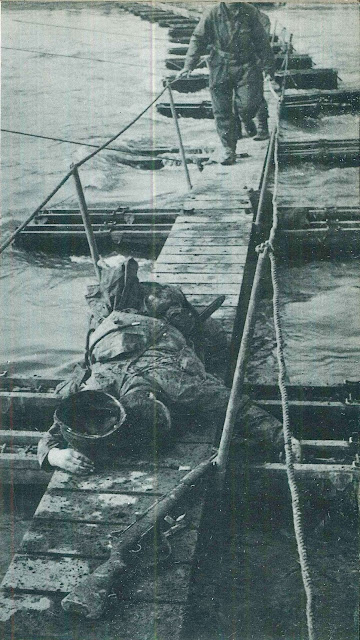About 15 Vietnamese civilians were killed and four others wounded in a landmine explosion on a rural road about 8 km west of Tuy Hoa in South Vietnam on March 18, l966. A mother was the victim of a landmine blast and her daughter cried out beside the corpse. Tuy Hoa is the capital of Phu Yen Province, located on the lower reaches of the Da Lang River in central Vietnam.
During the Vietnam War, murders, kidnappings, torture and intimidation were routinely carried out in conflicts between the Viet Cong (VC) and the Vietnam People's Army (PAVN). It was estimated that the total number of South Vietnamese civilians killed by the VC/PAVN between 1954 and 1975 ranged from about 106,000 to 227,000. It cowed Vietnamese civilians, liquidated its opponents, demoralized South Vietnamese government officials, and boosted tax collection and propaganda activities. Fear showed the South Vietnamese government that it could not defend itself. In the early years of the Vietnam War, assassinations and similar terrorist activities were organized by the VC's Special Action Force, which was consolidated into the VC, reaching a strength of about 25,000 troops in 1970. In addition to targeted killings and kidnappings, the VC and PAVN frequently pushed into refugee camps and placed landmines on roads frequented by villagers. They were detonated when heavy vehicles passed by. They randomly shelled major cities with rockets of about 122mm. Large-scale terrorist incidents include the Đắk Sơn massacre, the Huế massacre, the Son Tra massacre, and the Thanh My massacre.
The Armed Forces of the Republic of Vietnam (ARVN) and the U.S. military also sniped and raided residents, and placed mines and traps in and around villages. Causing villagers to react and retaliate attacks quickly, the VC entered one village and forced the local population to support the revolution. The day after the terrorist information was conveyed to the district capital, American warplanes bombed the village and its church. PAVN/VC troops consistently denied any terrorist tactics, suggesting that from 1968 to 1972, about 80 percent of terrorist victims were civilians and only about 20 percent were government officials, police officers, Self-Defense Forces personnel, and pacification cadres. He suggested that only about 20% of the victims were civilians.









